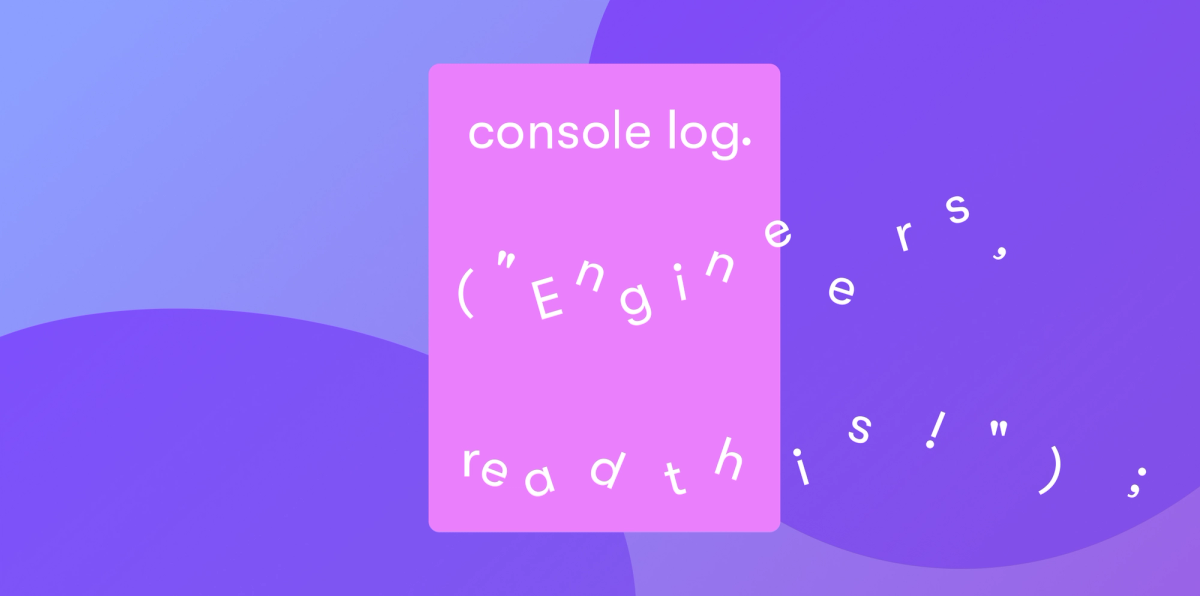Cracking the Code: How to Get Engineers to Actually Read Your Documents

Craft Documents Engineers Can't Resist
We preach collaboration around here. One major collaboration hurdle is keeping everyone, especially some technical roles, engaged and invested in documentation. While we encourage transparency and cross-functionality, there are times when parts of the team just seem...uninterested.
Why the Disconnect? A Deep Dive into the Engineer's Mind
Engineers. They’re a bit unique. Of course, everyengineer on every team is different. But sometimes problem-solving gets in the way of communication. They crave clarity, efficiency, and relevance. Engineers are constantly bombarded with information, so yours better be worth their precious time. So, what makes your docs fail?
- The Bureaucracy: Walls of text, jargon labyrinths, and outdated information make engineers feel like they're trapped in a technical waiting-room. Not exactly conducive to a productive (or collaborative!) journey.
- The Blame: Is the doc accurate? Up-to-date? Is it even the right doc? Confusion breeds distrust and disengagement faster than you can say "version control nightmare."
- The One-Way Street: You write, they ignore. Top-down communication creates a chasm between you and your engineers, leaving them feeling uninvested and unheard.
7 Steps to Get Engineers to Read your Docs
Transform your documents from dust-collectors to must-reads with these potent strategies:
1. Spice it up: A well-placed GIF or meme can lighten the mood–humor that resonates with your engineers goes a long way. Focus on clear, concise writing, avoiding jargon and unnecessary complexity. Remember, clarity is paramount.
2. Be direct and keep it relevant: Ditch the fluff and focus on what engineers need to know. Tailor each document to its purpose and audience. Think "need-to-know," not "nice-to-know." Don't make them wade through pages of irrelevant information. Sorry, no rants (we know it’s difficult).
3. Collaboration is the key (isn’t it always?): Don't just write at them, write with them! Involve engineers in the creation process. This fosters buy-in, ensures the information is relevant, and provides valuable insights you may have missed. Think of it as co-creating a technical masterpiece, not a solo project.
4. Show, don't just tell: Pictures are worth a thousand lines of code. Diagrams are the visual learners' best friends. Use them to illustrate complex concepts and relationships, making the information more engaging and easier to digest. Remember, a picture is worth a thousand lines of code (sometimes). Think "infographics, not instruction manuals."
5. Build trust, build engagement: Trust is the foundation of effective communication. Be transparent, and open to feedback, and demonstrate your understanding of their needs. When engineers trust you, they'll value your words (and your docs). Remember, trust takes time and effort, but the payoff is invaluable. Think "partnership, not dictatorship."
6. Leverage Collato for documentation: Ditch tedious drafting–Collato generates content based on your data, personalized to your team's tone and free from jargon. Securely transcribe and share meetings to capture key points and update documents, eliminating information silos forever. Collaborate effortlessly with real-time editing, task management, and instant sharing. It all integrates seamlessly with your existing tools like Docs and Notion, so all of your docs are accessible to your team.
7. Ask for Help: If you need help from an engineer, or have a technical question or problem, don’t hesitate to ask! Engineers tend to read the doc if they need to help, or if there is an obvious technical error (yes, seriously.) If you include something that is a technical mistake, know that an engineer will probably tell you all about it.
Remember: It's not about forcing engineers to read your docs. It's about creating documents that are so valuable, relevant, and engaging that they want to read. By following these tips, you'll transform your docs from groan-inducing chores to collaborative tools that empower your team and drive success.
Additional Tips for the Truly Ambitious (Going the Extra Mile):
- Get Personal: Tailor the doc's tone and content to the specific engineer's preferences and interests. A little personalization goes a long way. They'll appreciate the effort and feel valued.
- Interactive Elements: Consider incorporating quizzes, polls, or even gamification elements to boost engagement and knowledge retention. Think of it as making learning fun (and maybe a little competitive).
- Version Control: Implement a clear version control system (like Collato!) to track changes and ensure everyone's on the same page. No more "wait, did you update the doc?" moments. Transparency builds trust.
- Celebrate Success: Recognize and reward engineers who actively engage with your docs and provide valuable feedback. Show them their input matters! Recognition is a powerful motivator, trust us.
Remember: This is a journey and not a destination. Experiment, gather feedback, and refine your approach. By consistently creating valuable, relevant, and engaging documents, you'll earn the respect and trust of your engineers, fostering a collaborative environment that drives innovation and success.
TL;DR
Ever feel your carefully crafted documents go unread by your engineers? Here's the key: understand their need for clarity, efficiency, and relevance. Ditch the jargon, prioritize need-to-know info, and collaborate with them on writing. Spice it up authentically, visualize complex concepts, and build trust through transparency. Tools like Collato can help by generating personalized content, capturing meeting info, and streamlining collaboration. Ultimately, create documents so valuable and engaging that engineers want to read them, fostering a collaborative environment for success.




